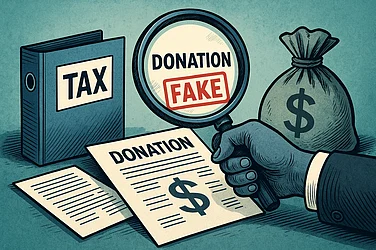In a case that blends technology with old-school detective work, tax officials in Hyderabad recently uncovered a Rs 68.7 lakh long-term capital gains (LTCG) fraud—all thanks to the font used in a document. The trouble began when a taxpayer claimed to have made just Rs 24,774 in capital gains on the sale of a property that had fetched him Rs 1.40 crore, according to a recent media report. The discrepancy was too large to ignore. A deeper look revealed that the seller had submitted repair bills dating back to 2002—allegedly amounting to Rs 68.7 lakh—to reduce the taxable capital gain.
One such claimed Rs 7.68 lakh in repairs, and that raised red flags. The document appeared too clean and polished. Authorities checked it with forensic software and then figured out it had been typed in Calibri font.
That one detail changed everything.
The Font That Gave It Away
Calibri was not commercially available until 2006 and only became widely used after being adopted by Microsoft Office in 2007. The document, dated July 6, 2002, couldn’t possibly have been created at the time it claimed. The use of the font revealed the bill as a forgery.
When asked, the taxpayer could not testify to the origin of the documents. He said he found photocopies that his late father used to file tax returns.
The fraudulent claim was withdrawn, a revised return was filed, and the correct tax was paid on the actual capital gains.
The case has caught the attention of tax professionals and chartered accountants across the country, not just because of the fraud, but because of how it was caught.
Use Of Technology By The Tax Department
This is among the first known instances where the income tax department has used “font forensics” to catch a falsified claim. Officials confirmed that similar digital tools are now being employed more widely, particularly in cases where old property sale documents are used to claim deductions on improvements or renovations.
“It’s not just about receipts anymore. We are now looking at metadata, file formats, and yes—even fonts,” said a senior official who didn’t want to be named.
Font history has become a surprising but effective weapon. Since each typeface has a known release date and version history, even a small mismatch can call the document’s authenticity into question.
Tax practitioners say this should be a wake-up call for anyone filing returns involving property sales or old capital assets. If you are claiming deductions or cost improvements from years ago, make sure your documents are both legitimate and time-consistent.
The case also points to a larger shift: tax enforcement is becoming smarter, faster, and more digital. No longer is it enough to photocopy a receipt or submit an old scanned bill. Every detail—from the date to the digital footprint—is now under the scanner.
For taxpayers, the lesson is clear. Accuracy matters. Authenticity matters. And as this Hyderabad case shows, even your font choices matter.













